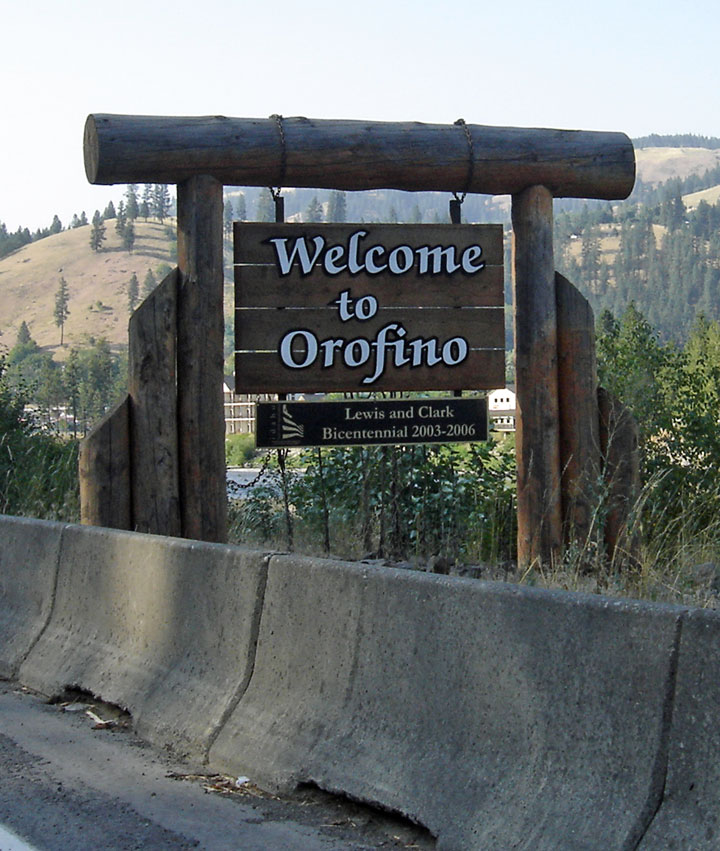

Orofino
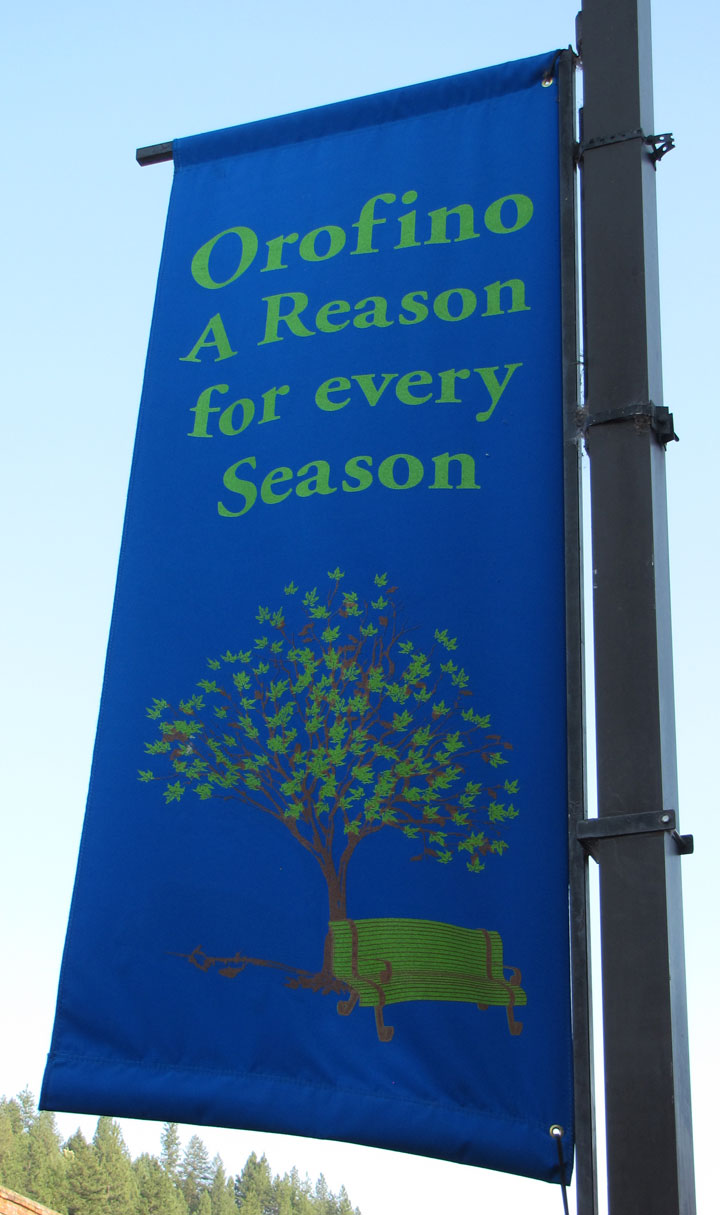
Orofino
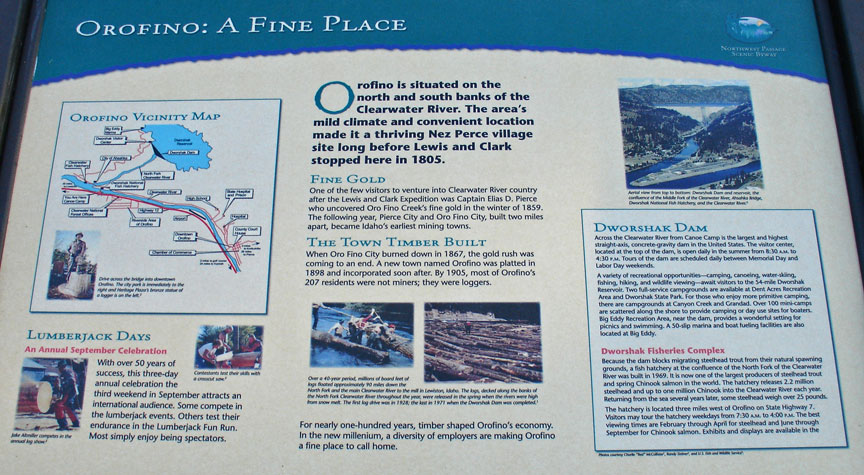
Orofino ("fine gold" [ore] in Spanish) is a city in Clearwater County, Idaho, along Orofino Creek and the north bank of the Clearwater River. The population was 3,247 at the 2000 census, and the city is the county seat of Clearwater County. Nearby is the historical "Canoe Camp," where the Lewis and Clark expedition built five new dugout canoes and embarked on October 7, 1805, downstream to the Pacific Ocean. Just 4 miles (6.4 km) north of town is the Dworshak National Fish Hatchery and the Dworshak Dam, third highest dam in the United States, completed in the early 1970s.
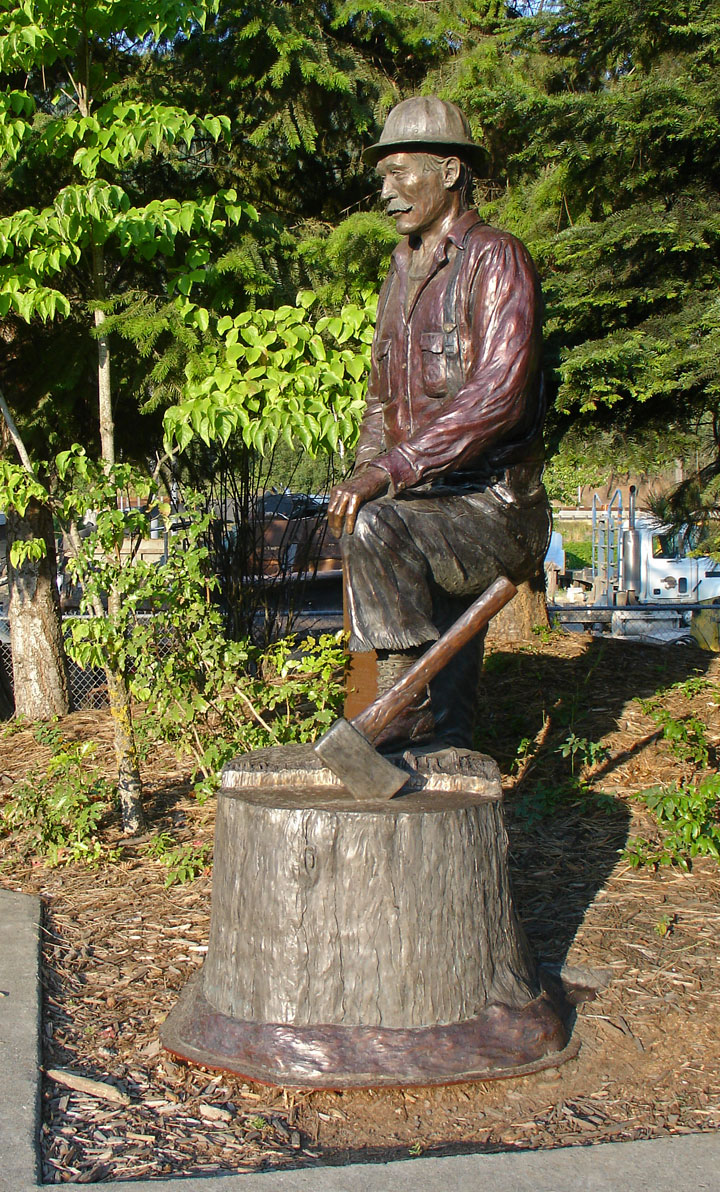
logging town
Originally the name was two words, Oro Fino, applied to a gold mining camp established in 1861 two miles (3 km) south of Pierce, that is now a ghost town. When the Nez Perce reservation opened to settlers in 1895, Clifford Fuller set up a trading post on his new homestead and the town (Orofino-on-the-Clearwater) was established the next year. The railroad, later part of the Camas Prairie Railroad, arrived from Lewiston in 1899.

Orofino is home to both the Idaho Correctional Institution - Orofino and Idaho
State Hospital North. These two facilities are located adjacent to another
Orofino institution: Orofino High School. The mascot for Orofino High School is
the Maniac, one of only two "Maniac" mascots in the country. The town hosts the
annual Orofino 4th of July Celebration as well as the Clearwater County Fair and
Lumberjack Days in late summer.
Text from Wikipedia


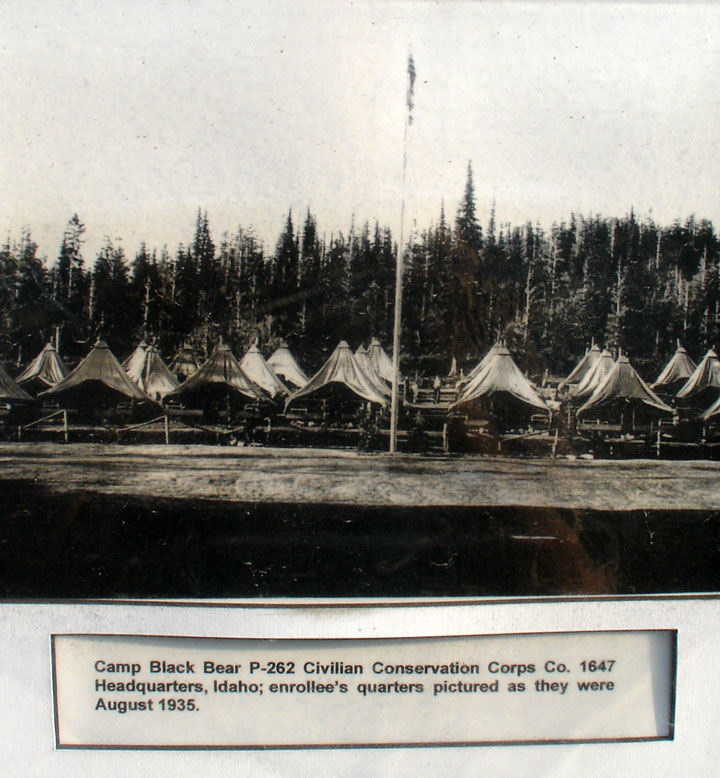
CCC Camp in 1935
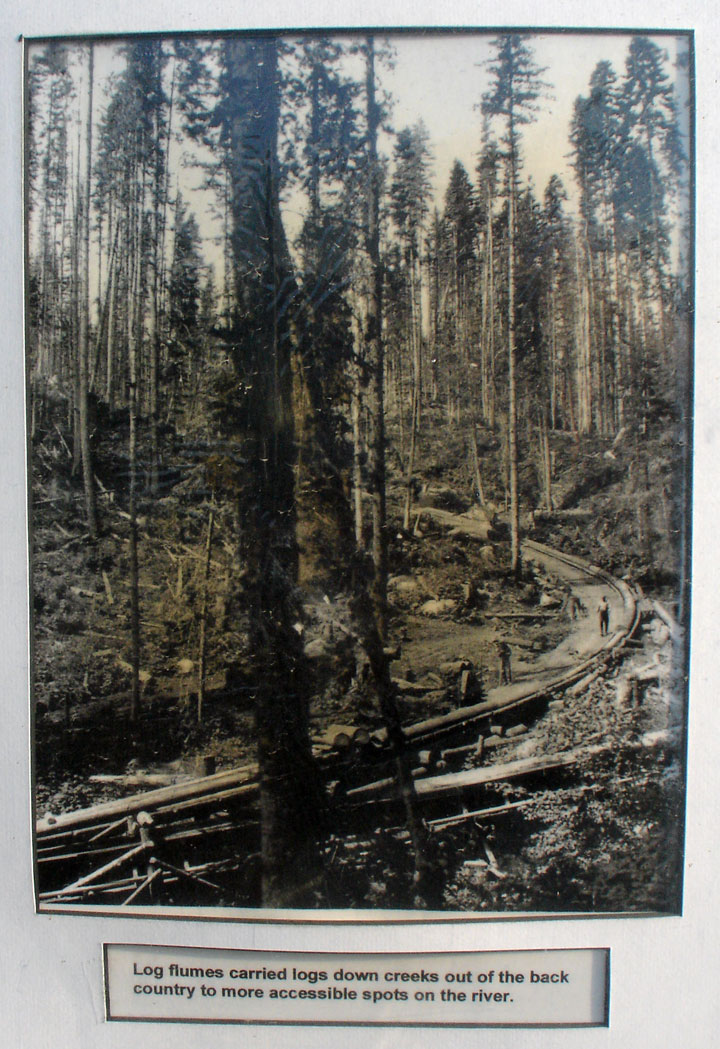
early log flume
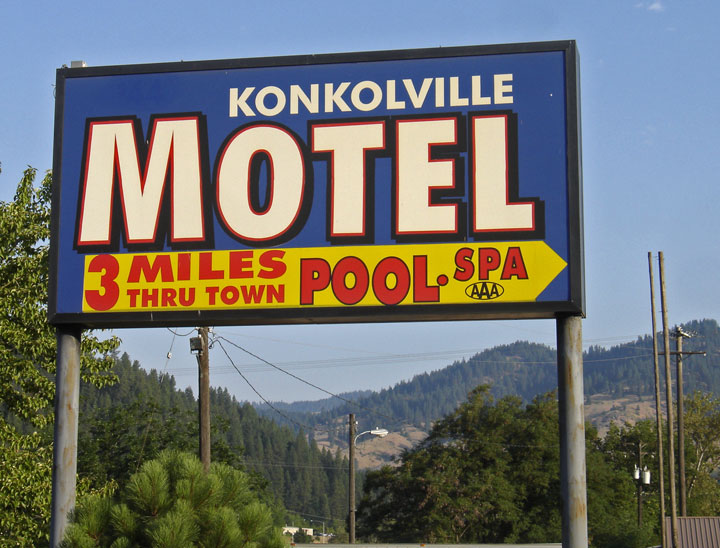

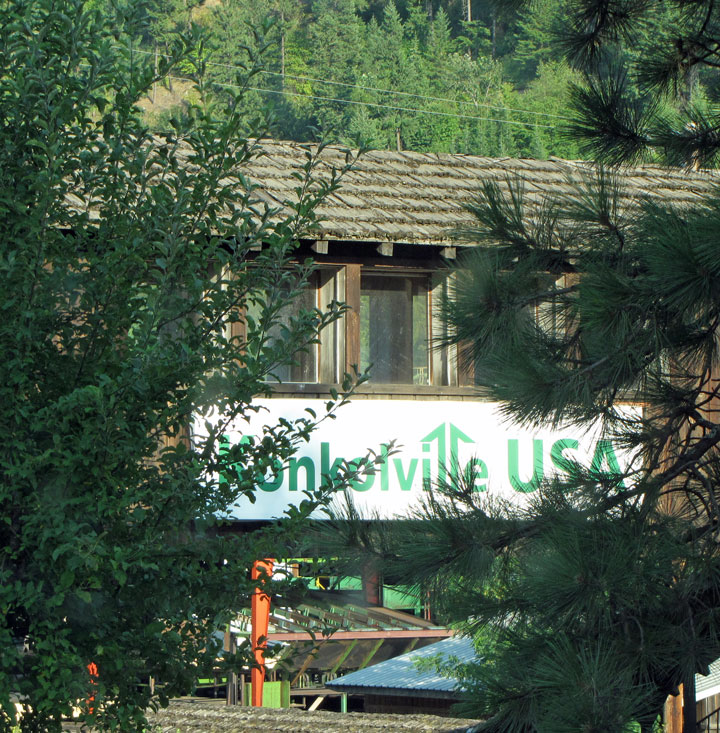
Konkolville Motel
